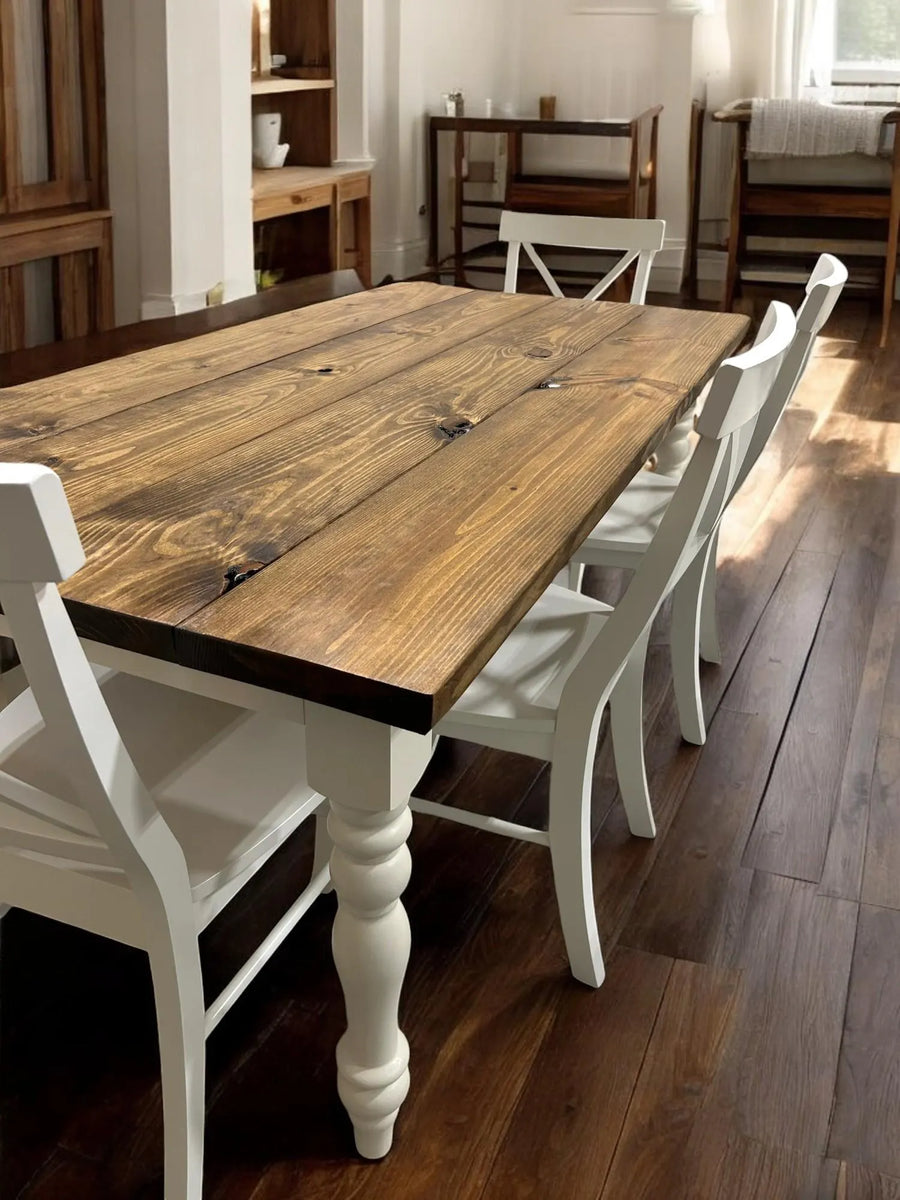Discover Versatile Styles for Custom Dining Table Legs Wood Solutions
Discover Versatile Styles for Custom Dining Table Legs Wood Solutions
Blog Article
Checking Out the Various Kinds of Dining Table Legs Wood for Your Eating Area
The selection of eating table legs wood can profoundly affect both the functional and aesthetic high qualities of your dining room. Strong timber options, such as oak and walnut, provide a traditional look with unequaled durability, while engineered wood alternatives offer innovative styles that imitate the richness of natural grains.
Solid Wood Options

Additionally, strong timber is renowned for its strength and longevity. Unlike engineered materials, solid wood is less susceptible to warping and damages gradually when effectively kept. This makes it a perfect choice for families or those who often hold events. Each piece of solid wood is distinct, showcasing private attributes that contribute to the charm and personality of the eating table.
In addition, strong timber can be ended up in countless methods, ranging from natural oils to stained finishes, permitting home owners to individualize their furnishings to match their design. In summary, picking strong wood for eating table legs not just makes sure structural honesty yet likewise enhances the aesthetic charm of the dining location, making it a beneficial investment for any kind of home.
Engineered Wood Alternatives

Plywood, built from multiple layers of timber veneer, is especially solid and stable, making it an outstanding choice for dining table legs. Its layered make-up allows it to withstand modifications in moisture and temperature much better than standard solid wood. MDF, on the various other hand, offers a smooth surface area for painting or veneering, allowing designers to accomplish a polished look while keeping architectural integrity.
When picking crafted timber choices, it is important to consider the designated usage and wanted aesthetic. These materials not only improve the capability of dining spaces but additionally allow for better style versatility, making sure that typical and contemporary styles can exist together sympathetically.
Reclaimed Wood Includes
Reclaimed wood supplies an one-of-a-kind blend of sustainability and character, making it a significantly popular option for eating table legs. Sourced from old barns, factories, and other frameworks, redeemed wood symbolizes a history that brand-new materials just can not replicate. Each piece lugs its own story, noted by distinct imperfections, knots, and differing grain patterns, which contribute to a table's distinct aesthetic charm.
Along with its aesthetic charm, redeemed wood is an eco-friendly choice. By repurposing previously made use of materials, it decreases the need for new lumber, therefore assisting to save woodlands and lessen waste. This straightens with an expanding customer choice for sustainable techniques in furniture.
In addition, recovered wood helpful resources is commonly more sturdy than freshly harvested wood because of its age. The natural drying out procedure that redeemed wood undertakes lead to a denser and more powerful material, making it much less prone to warping and splitting. This improves the longevity of dining tables, allowing them to endure the roughness of everyday use.
Softwood vs. Hardwood
When selecting dining table legs, recognizing the distinctions between softwood and hardwood is essential for attaining both functional and visual goals. They usually show a more rustic look, making them ideal for country-style or casual dining rooms.
On the other hand, hardwoods, sourced from deciduous trees like maple, cherry, and oak, are renowned for their thickness, strength, and durability. The complex grain patterns and rich tones of woods supply a sophisticated and classic allure, making them perfect for formal dining setups. While hardwoods tend to be a lot more costly and much heavier, their durability versus damage frequently validates the financial investment.
Inevitably, the choice in between softwood and hardwood for dining table legs should align with your layout vision, usage demands, and budget, site guaranteeing that your eating area mirrors your individual design while continuing to be useful in time.

Surfaces and Therapies
The aesthetic allure and long life of eating table legs can be significantly boosted through various finishes and treatments. These procedures not only shield the timber from damages however additionally boost its appearance, enabling it to match diverse indoor designs.
One typical treatment is staining, which penetrates the timber and enhances its natural grain while including shade. Stains supply an abundant, stylish appearance, making it possible for homeowners to match their furniture with existing design. Alternatively, clear surfaces such as polyurethane or varnish create a safety layer without changing the wood's original color, guaranteeing resilience against damage.
Furthermore, all-natural oils, like tung or linseed oil, nourish the wood and use a refined shine, all while being green. These oils enable the surface to take a breath, preventing dampness accumulation and prospective warping.
For those looking for a rustic beauty, weathered or troubled finishes can be related to create an aged appearance, adding character to the item. Inevitably, the option of treatments her response and coatings relies on individual preference, wanted aesthetic appeals, and the details timber kind, making it vital to consider these factors when choosing table legs for your space.
Conclusion
Strong woods, crafted alternatives, and redeemed alternatives each deal distinct benefits, providing to various preferences and requirements. Ultimately, the option of wood kind need to align with wanted design, resilience, and environmental considerations, improving the total dining experience.
The option of eating table legs wood can greatly impact both the useful and visual high qualities of your dining space - Dining Table Legs Wood. Solid timber choices, such as oak and walnut, offer a timeless appearance with unrivaled toughness, while crafted timber options use ingenious styles that mimic the splendor of all-natural grains. Solid timber uses a classic high quality that can raise the total style of a dining room. Each item of solid timber is special, showcasing private qualities that include to the appeal and character of the eating table
Additionally, reclaimed timber is frequently extra long lasting than newly collected wood due to its age.
Report this page